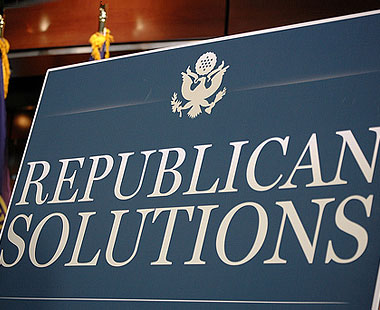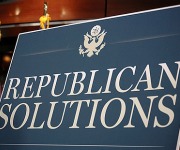 Pollution is not the solution.Cross-posted from Real Climate Economics.
Pollution is not the solution.Cross-posted from Real Climate Economics.
Paul Krugman’s column in The New York Times Thursday laments one of the many ironies of our time: Politicians in Washington are finally talking about job creation, but Republicans (and some Democrats, I’m sure) pin their hopes for employment on environmental deregulation. As Krugman points out, “Serious economic analysis actually says that we need more protection, not less.”
By serious economic analysis, Krugman means peer-reviewed articles published in academic journals over the last few decades that have probed the relationship between environmental regulations, employment, and economic growth. He doesn’t mean the American Petroleum Institute’s latest report that purports to show job growth potential through … wait for it … relaxing restrictions on oil and gas extraction. He means the latest findings by Yale University economist William Nordhaus, published in the American Economic Review [PDF], the top-ranked journal in economics, that finds that the economic cost of air pollution exceeds the value added of coal-fired electric generation by a factor of nearly six to one. And this estimate doesn’t include the economic damages from climate change. Pollution-related costs impede productivity and growth in the U.S. economy. Imposing more of these costs on society through deregulation is not only undesirable, it is bad economic policy.
So let’s review what economists do know [PDF] about the relationship between environmental regulation and jobs. The oft-cited concern is that environmental regulations will increase production costs, raising product prices and decreasing the quantity of goods and services demanded. The good news, however, is that empirical evidence finds little support for wide-scale job losses or relocations arising from strengthening of environmental policies in the U.S.
The economics research on this topic extends back over the last few decades. The Clean Air Act Amendments of 1990 marked the last significant package of environmental regulation passed in the U.S., and the creation of NAFTA in 1994 presented new opportunities for U.S. firms to relocate abroad to avoid environmental regulations. Thus, there is extensive literature that covers a long time period that evaluates how environmental regulations impact businesses, employment, and income.
The economics literature covering this history supports three conclusions. The first conclusion is that businesses are unlikely to relocate to avoid compliance with environmental regulations. The empirical evidence shows that there has been little movement by U.S. firms to other countries to escape environmental regulatory burdens. Nor has there been a migration of new investment in dirty industries to developing countries with lax regulations, the so-called “pollution havens”. Over the last few decades of the neoliberal era, both dirty and clean industries have relocated outside of the U.S., but that movement has been driven mostly by the pursuit of lower wage and benefit costs (especially health costs), which comprise a much higher percentage of their total costs (Goodstein 1999; Gallagher 2006 [PDF]). What the research has found is that environmental compliance costs are generally below 2 percent of total business costs (Jaffe et al. 1995 [PDF]); the potential savings are just not large enough to compel relocation to escape environmental regulations alone. Economists searching for evidence of widespread flight of polluting industries to different countries or different states within the U.S. have yet to uncover evidence of a trend. (This is not to say that firms that leave the U.S. in pursuit of lower labor costs behave as good environmental citizens abroad).
The second major conclusion economists have drawn from studies examining the impacts of regulations on businesses and competitiveness at the national or regional level is that that plant closings and layoffs as a result of environmental regulations are actually rare. Numerous independent studies show this. Layoffs that can be attributed to environmental regulations account for only one-tenth of 1 percent of all mass layoffs (of over 50 employees) nationwide. This is equivalent to roughly 1,000 to 3,000 jobs per year across the entire country. For example, less than 7,000 jobs were lost between 1990 and 1997 as a direct result of the Clean Air Act Amendments. Over that same period, 10 million U.S. workers were laid off for non-environmental reasons (Goodstein 1999). Among the reasons for major layoffs, as reported by the Bureau of Labor Statistics, environmental and safety-related shutdowns are among the least common, accounting for about 0.1 percent of job losses (Goodstein 1999). A study of the heavily regulated steel, petroleum, plastics, and pulp and paper industries concluded that, “while environmental spending clearly has consequences for business and labor, the hypothesis that such spending significantly reduces employment in heavily polluting industries is not supported by the data” (Morgenstern et al., 2002, p. 25).
The third major conclusion is that at the economy-wide level, there seems to be no real trade-off between environmental regulation and growth. Environmental regulation leads to a very slow shift in the composition of spending: Jobs are gained as workers produce, install, and maintain cleanup equipment and engage in retrofits, and are lost as firms pass on those cost increases to consumers, who have to cut back their purchase of goods and services from that sector. Environmental regulation begins a slow shift away from the products of dirty industry. An example would be the shift into new recycling jobs and out of waste disposal jobs, as the percentage of waste recycled in the U.S. rose significantly in the 1990s.
While job loss can be catastrophic to an individual worker, net job loss (or gain) is the variable that should drive public policy. Small job loss in a particular plant or industry because of a change in regulatory environment is just noise against the backdrop of the millions of employed and unemployed in the U.S. economy. And, the handful of job losses has to be compared to the jobs gained elsewhere in the economy as a result of the new regulations. For example, a recent report finds that coal ash regulations can create as many as 28,000 jobs.
As with all public policy, changes in environmental regulations create winners and losers. Specific businesses or industries may be disproportionately impacted (for example, the coal workers from national carbon legislation). Labor market conditions in the U.S. will continue to be more heavily influenced by larger structural changes in the U.S. and global economy than any proposed regulatory changes. If we want to get to the heart of the unemployment proble
m in the U.S., we need to explore these structural issues. Exploiting the public’s deep need for job creation to promote an anti-regulatory agenda is dishonest and dangerous.




